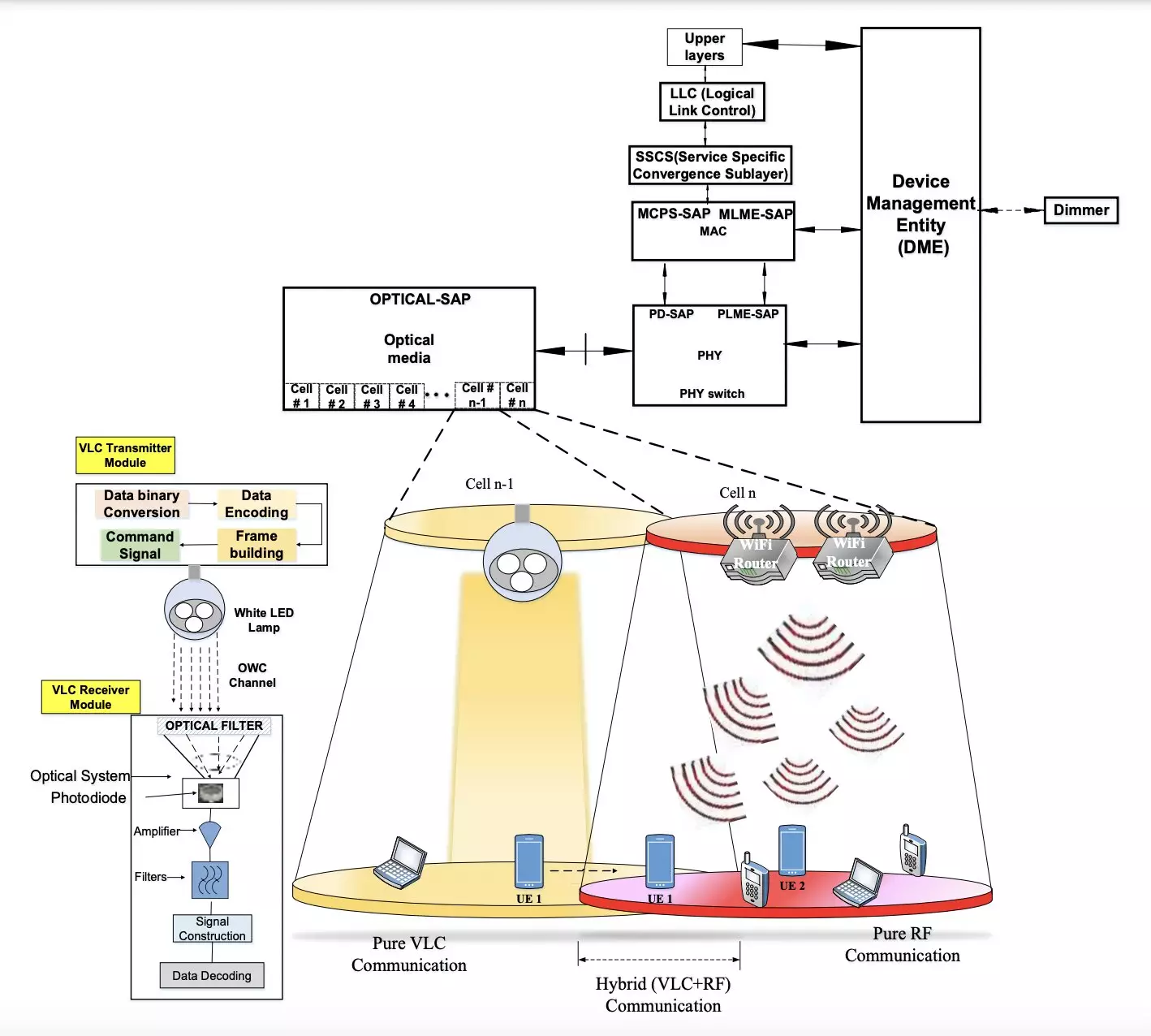Wireless internet has become an integral part of daily life for people around the world, supporting various activities like professional communication, internet browsing, and content streaming. However, the increasing demand for wireless internet access has led to higher power consumption and consequently, greater carbon emissions. In order to address this issue, researchers are focusing on developing energy efficient techniques to support communication between devices and the sharing of media and other information online.
One innovative solution that has emerged is visible light communication (VLC), which utilizes visible light to transmit data through light-emitting diodes (LEDs) or other artificial light sources. Researchers at Central University (CU), IIDM, and CU J&K in India have taken this concept a step further by developing a new hybrid approach that combines VLC with RF communication. This hybrid solution, outlined in a paper published in IEEE Transactions on Green Communications and Networking, aims to enable reliable communication in indoor environments with high data transmission rates while consuming less energy.
The wireless communication system proposed by the team of researchers consists of two main components: a transmitter and a receiver module. These modules are physically separate but are connected through a VLC channel. The transmitter uses LED-produced light to transmit binary data, while the receiver, equipped with a photo-sensitive device like a photodiode or camera, extracts the information from the light emitted by the transmitter. The team also suggests employing modulation schemes to maintain a continuous data stream while keeping power consumption at a constant level throughout communication.
The researchers conducted an initial evaluation of their hybrid communication system using various simulation platforms. Their findings indicate that the system facilitates stable communication between devices in the same indoor environment, leading to significant energy savings. They compared the performance of RF communication, Hybrid (RF+VLC), and pure VLC systems, demonstrating the high energy efficiency of their proposed approach. The results show lower Specific Absorption Rate (SAR), reduced power density, complexity, and temperature elevation in human body tissues exposed to radiation. Additionally, the system was found to extend the battery life of mobile devices by approximately 7 hours.
This study by the team of researchers contributes to ongoing efforts to reduce power consumption and electromagnetic radiation by enhancing the energy efficiency of wireless communications. The initial simulations conducted by the researchers showcase the potential of their hybrid approach, which could be further optimized and tested in future studies. By developing innovative solutions like the hybrid RF+VLC system, researchers aim to make wireless communication more sustainable and environmentally friendly for the future.


Leave a Reply